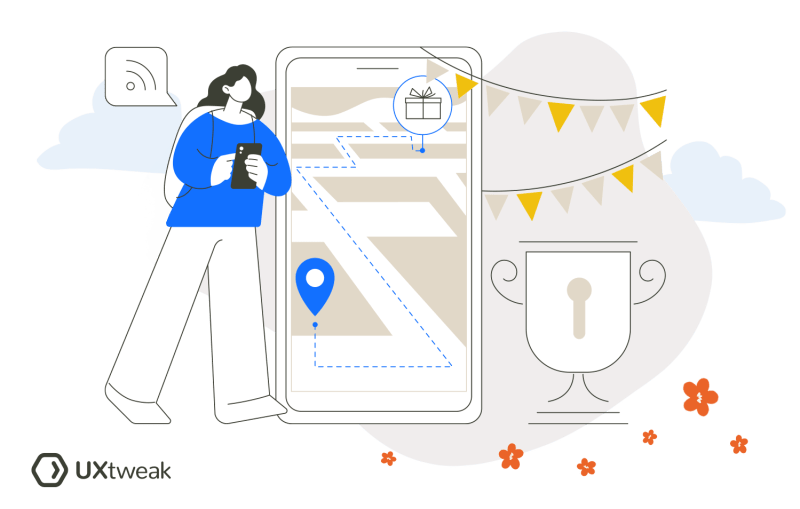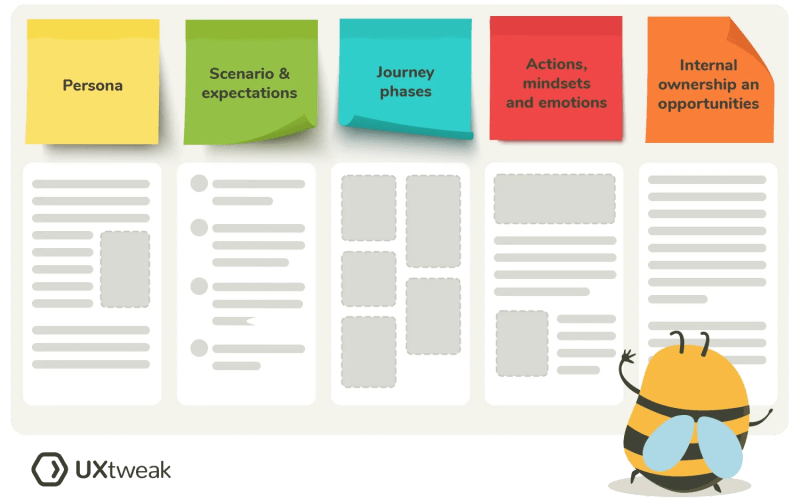In this article, we have collated everything you need to know about participatory design as part of the development process including a solid definition, its major benefits, hands-on approaches to it as well as real-life examples to help you digest the concept and use it to develop innovative and user-friendly products.
Participatory design can be traced back to the Scandinavian countries, during the 1960s and 1970s where it was used in various workplaces to democratize the design process and to empower workers to be involved in the end goal of the product they were working on.
Design is rapidly evolving so if you want to stay on top of the latest design trends, then keep reading to learn more about participatory design and how you can use it in your own practice.
What is participatory design?
Participatory design is an approach to product design and development that is based on the active participation and collaboration of all the stakeholders, including the end users, during the design process.
By placing co-creation at the center of the design process this method ensures that the end result-product meets the needs of the different stakeholders by soliciting their feedback throughout the design and development process and not after it!
Participatory design highlights the importance of joint decision-making and the power that creating partnerships can have on product design resulting in innovative solutions.
How is participatory design beneficial?

Here are some of the key benefits of participatory design:
User involvement
One of the most critical benefits of the participatory design process is user involvement. By placing the user at the center of the design, product development becomes a process of co-creation resulting in a sense of ownership on the user’s part. This way, users are more likely to be loyal to the product and commit to using it enhancing user adoption and retention.
Improved product relevance
Participatory design ensures that products are designed by taking the opinions of all the major stakeholders into account resulting in improved product relevance. This approach leads to products and solutions that are more aligned with the goals of the business and the needs of the users.
It is exactly this alignment that reduces the risks of costly redesigns as the product is already fine-tuned.
User empowerment
Participatory design empowers users by giving them a voice in the creation process. This empowerment fosters a sense of agency and investment in the product, which can translate into greater user loyalty and advocacy.
When users feel that they have contributed to the design, they are more likely to champion the product and provide ongoing support. Empowered users can also become brand ambassadors, promoting the product within their networks and communities.
Increased product innovation
Co-creation and collaboration means that diverse opinions are being heard resulting in the creation of innovative products. This diversity in thoughts can lead to innovative solutions that potentially one perspective or one team would not be able to come up with.
Participatory design also fosters a culture of innovation within the product team and the whole development process.
Participatory design approaches

If you are not sure about how to incorporate participatory design into your design and development process, here are some participatory design approaches to get you started:
User-centered design
User-centered design is an approach to design where the users, their wants, and limitations, are at the heart of the design process. User-centered design is heavily based on user research and rigorous testing to ensure that the final product meets the user’s expectations.
Usability and enhanced user experience overall are at the top of your list when designing with this approach.
Co-design
Another participatory design approach is co-design. In co-design users co-create value along with the product team. This approach is all about collaboration and joint decision-making with methods like brainstorming and prototyping being of critical importance in the design process.
Co-design is all about building strong relationships and a sense of trust among the stakeholders.
User-generated design
User-generated design is yet another participatory design approach that revolves around users creating design solutions using tools given by the product team. This methodology is all about creating tailor-made products that reflect a more personalized design approach. User-generated design can be a great source of innovation and gives ample space for user customization.
Participatory design methods
Here are some of the participatory design methods for your arsenal:
Participatory design workshops
You cannot go wrong with a workshop! Participatory design workshops are spaces where designers and users alike can collaborate and co-create design solutions. Workshops are a great way to foster collaboration and creativity in a shared space where all voices are equally heard.
To conduct one, start by defining clear objectives, then facilitate activities such as brainstorming, sketching, or prototyping to guide participants toward generating ideas and solutions together.
Contextual user interviews
Another great participatory design methodology is contextual user interviews. This type of interview revolves around observing and interviewing users who are interacting with the product or its prototype.
By getting juicy insights into the wins and challenges that users encounter, designers can better inform their products and fine-tune their solutions.
Participatory prototyping
Another participatory design methodology to consider is participatory prototyping which is all about involving users in the creation of the product prototypes. This is an approach that allows for the co-creation of design solutions but also instant feedback on the designs that are being created ensuring that the user expectations are met upfront.
This method fosters creativity, innovation, and experimentation as it allows for real-life improvement and iteration. To implement it, provide users with tools and materials to build or modify prototypes, then facilitate discussions to refine and enhance the designs collaboratively.
User advisory panels
Yes, user advisory panels are a great way to incorporate participatory design practices into your product development process. User advisory panels are a group of people that are representative of your target users and they are committed to providing feedback and insights while the product is being brought to life.
To create a user advisory panel, define clear objectives, recruit a diverse group of representative users, and regularly engage them through meetings, surveys, or discussions to gather ongoing feedback throughout the product development process.
A great example of this approach is Microsoft, which has utilized its Windows Insider Program to gather feedback from millions of users, allowing participants to test and shape new features before they are publicly released.
Focus groups
Focus groups are another alternative participatory design method. Focus groups consist of diverse groups of users that are coming together to discuss their needs and lived experiences. These sessions can be of critical value as they provide unsolicited diverse insights and opinions about the product or the design solutions in question.
User journey mapping
Last but not least, user journey mapping is another method that you can tap on when it comes to participatory design methodologies. A user journey map is essentially a visualization of all the steps that a user needs to take to complete a task within a product.
By using this artifact, designers can get into the shoes of their users and create design solutions that optimize the experience at every touchpoint.
Learn how to create a user journey map for your product:
When to apply participatory design?
Participatory design can and should be applied throughout the product development process. Our recommendation would be to tap into its transformative power during the early stages of ideation as it can shape future design solutions and help define the concept of the product.
Nonetheless, a participatory design approach can also be very beneficial during the prototyping and testing phases, as it can assist in further refining and validating the design decisions that were made during the ideation process.
Last by not least, participatory design and continuous improvement go hand-in-hand so tapping into participatory design practices can be also beneficial after the initial launch of the product ensuring that the product stays relevant and effective over time.
How to apply participatory design?
Here are a few simple steps to apply participatory design in your design and development process:
1. Identify stakeholders & objectives
Start by identifying all the main stakeholders and do not forget to include your end users! Make sure that everyone involved has a clear understanding of the main goals of the participatory design process and that everyone has a sit at the table.
2. Recruit participants
Step two is to recruit your participants. Ensure that those are representative of your target audience, that is, however, diverse! This diversity when it comes to backgrounds, lived experiences and technical proficiency will result in more diverse insights and consequently more innovative solutions.
To ensure that your sample is representative of all end-users, take the time to segment your target audience and describe each group of users, their problems and needs.
3. Set design expectations
Do not forget to clearly communicate the scope and expectations of the design process to all the participants. This will ensure that each of the stakeholders is clear about their roles and responsibilities. Setting design expectations can foster stakeholder engagement and thus, better results overall.
4. Conduct workshops & run user interviews
The next step it to get creative and organize your stakeholder workshops as well are run user interviews to gather juicy insights from your users. Workshops and interviews being generally unstructured methods, offer a great space for active participation and qualitative feedback.
They foster an environment where both stakeholders and users can openly express their opinions about the product and contribute with valuable insights.
5. Draw user journey maps
Once your interviews and workshops have concluded it is time to start visualizing the user journey. Start by mapping each touchpoint of the user experience and do not forget to add insights from the user interviews taking notes of pain points and opportunities for improvement.

An example of a user journey map.
6. Build & test prototypes
Once your journey map is ready your next step is to develop and test your prototype. Building and testing prototypes allows for continuous improvement and refinement of the product and ensures that the outcome aligns with the needs and expectations of the stakeholders across the board.
Prototype usability testing is your go-to method for quick insights and rapid iteration. With a good prototype testing tool at hand, you just need to share the prototype link from your design software, define tasks for users to complete, and watch them do it!
Prototype testing allows you to quickly spot usability issues, rework the design to solve them and test again until it fits users’ needs!
7. Document & share progress
Last but not least, do not forget to document all the changes during the design process and share this with all your stakeholders. Clear communication is the alpha and the omega of the participatory design process as it fosters an environment of trust and shared decision-making.
Participatory design examples
Here are companies that have used participatory design practices with immense success:
IKEA

IKEA is a great example of a company that is employing participatory design approaches to its development cycle by involving designers, end users, and artists. The iconic IKEA store layout was a result of such practices!
They are constantly running co-creation activities to involve their customers into the ideation and design process for their new products. This is one of the reasons for them being such a “love” brand among their customers, with people constantly coming back for more products that correspond to their actual needs and preferences.
LEGO

Lego is another great example of participatory design as co-creation with their fans is at the heart of what they do. Lego draws a lot of ideas and insights through its Ideas Platform and the different Lego communities ensuring that their products always stay relevant and appealing.
Google has also used participatory design to build a lot of its products. An example of this is Google Maps. Google Maps was built and fine-tuned with users contributing to ideas and reporting issues allowing for a high degree of user involvement.
Limitations of Participatory Design
Participatory design also has its limitations. Here are some of the caveats you need to have in mind:
Research logistics
Participatory design activities can be challenging logistics-wise and they can be very time and resource-consuming. Planning and executing research studies as well as analyzing and collecting data can be a complex task to accomplish.
Research costs
As briefly mentioned above, research studies can be resource-intensive and resources equals money. Research can be hence costly so always make sure you balance the cost with the benefits of research before committing to it!
Representation issues
Recruiting a diverse sample of participants for your study can be very challenging. Not taking into consideration a more diverse user base can lead to highly biased insights that can be translated into unsuccessful product solutions.
Privacy concerns
The participation of users in product development requires a professional handling of personal data due to numerous privacy concerns. Ensuring that your organization is compliant with national and international laws can be challenging so you need to be on top of those to ensure data security.
Wrapping Up
Participatory design is an approach to product design and development that put emphasis on the co-creation of design solutions through the involvement of all the stakeholders, including its end users.
This approach to design can have a host of advantages such as user empowerment and product innovation but also certain caveats like for instance its cost and complex logistics.
Companies the likes of Google, Lego, and Ikea have used this method to co-create products with their fans showing the power of this approach!
Looking to support your participatory design practices with a good all-in-one research tool? UXtweak is here for all your user research and testing needs!
